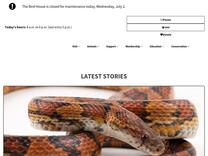Swift Fox Recovery | Smithsonian’s National Zoo and Conservation Biology Institute https://nationalzoo.si.edu/conservation-ecology-center/swift-fox-recovery
Smithsonian scientists, in collaboration with the Fort Belknap Fish and Wildlife Department, are embarking on a five-year swift fox reintroduction project to restore swift foxes to tribal lands and to help reestablish connectivity between disjointed swift fox populations.
Fort Belknap Indian Reservation is located in the homeland of the Aaniiih and Nakoda

